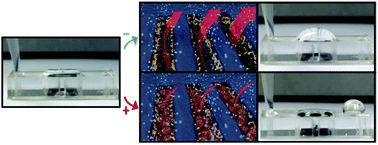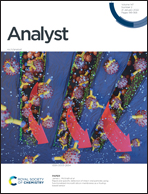Rapid and specific detection of intact viral particles using functionalized microslit silicon membranes as a fouling-based sensor†
Abstract
The COVID-19 pandemic demonstrated the public health benefits of reliable and accessible point-of-care (POC) diagnostic tests for viral infections. Despite the rapid development of gold-standard reverse transcription polymerase chain reaction (RT-PCR) assays for SARS-CoV-2 only weeks into the pandemic, global demand created logistical challenges that delayed access to testing for months and helped fuel the spread of COVID-19. Additionally, the extreme sensitivity of RT-PCR had a costly downside as the tests could not differentiate between patients with active infection and those who were no longer infectious but still shedding viral genomes. To address these issues for the future, we propose a novel membrane-based sensor that only detects intact virions. The sensor combines affinity and size based detection on a membrane-based sensor and does not require external power to operate or read. Specifically, the presence of intact virions, but not viral debris, fouls the membrane and triggers a macroscopically visible hydraulic switch after injection of a 40 μL sample with a pipette. The device, which we call the μSiM-DX (microfluidic device featuring a silicon membrane for diagnostics), features a biotin-coated microslit membrane with pores ∼2–3× larger than the intact virus. Streptavidin-conjugated antibody recognizing viral surface proteins are incubated with the sample for ∼1 hour prior to injection into the device, and positive/negative results are obtained within ten seconds of sample injection. Proof-of-principle tests have been performed using preparations of vaccinia virus. After optimizing slit pore sizes and porous membrane area, the fouling-based sensor exhibits 100% specificity and 97% sensitivity for vaccinia virus (n = 62). Moreover, the dynamic range of the sensor extends at least from 105.9 virions per mL to 1010.4 virions per mL covering the range of mean viral loads in symptomatic COVID-19 patients (105.6–107 RNA copies per mL). Forthcoming work will test the ability of our sensor to perform similarly in biological fluids and with SARS-CoV-2, to fully test the potential of a membrane fouling-based sensor to serve as a PCR-free alternative for POC containment efforts in the spread of infectious disease.



 Please wait while we load your content...
Please wait while we load your content...